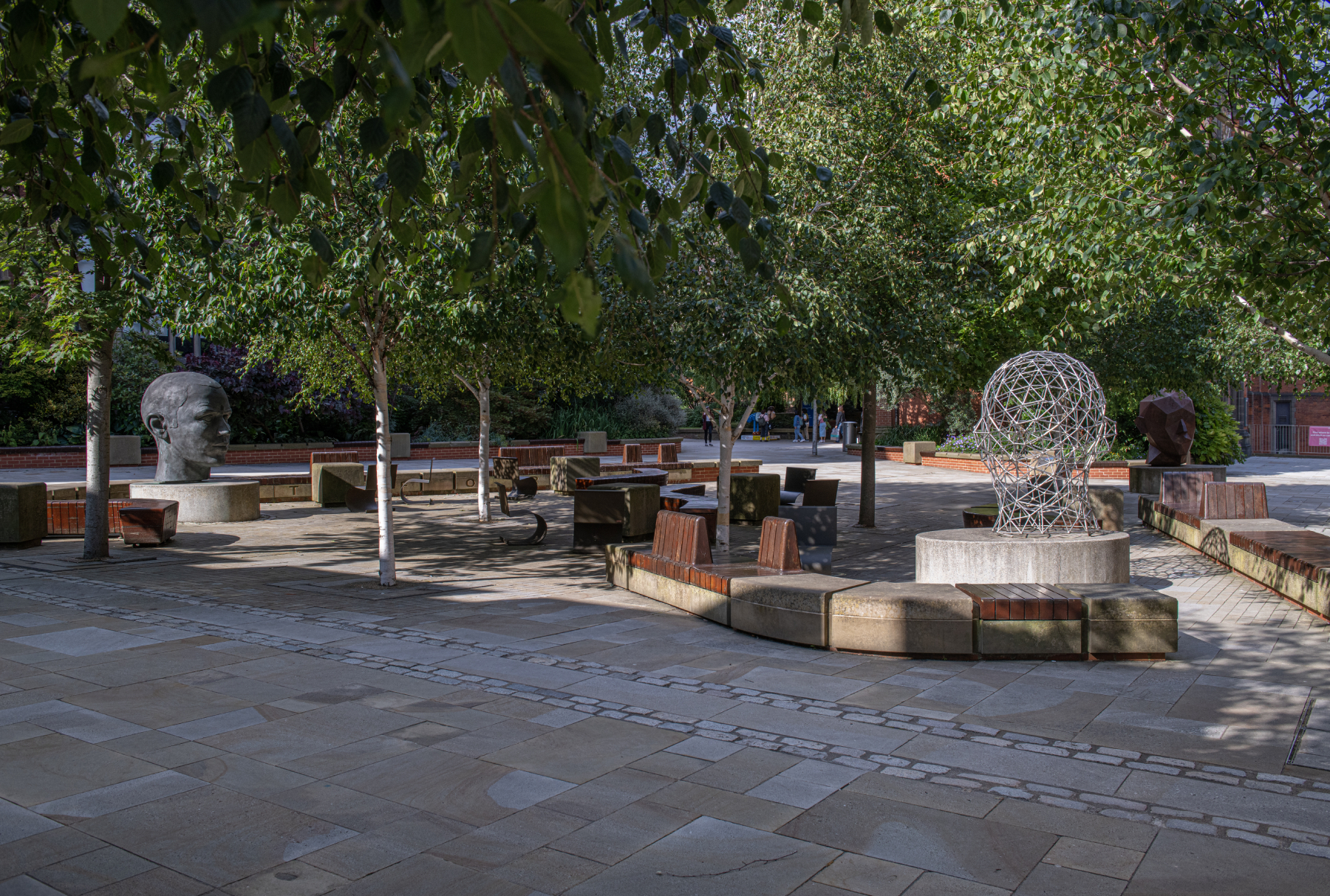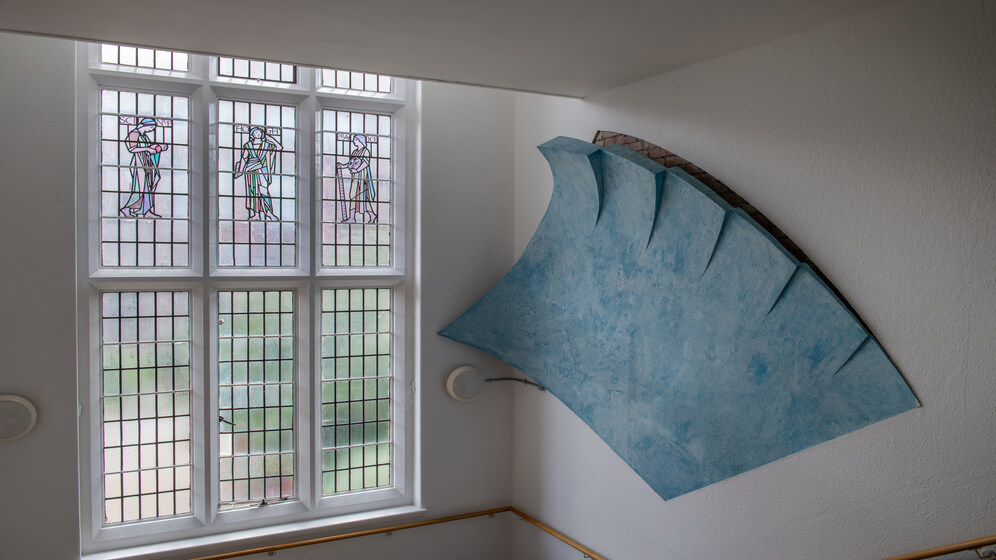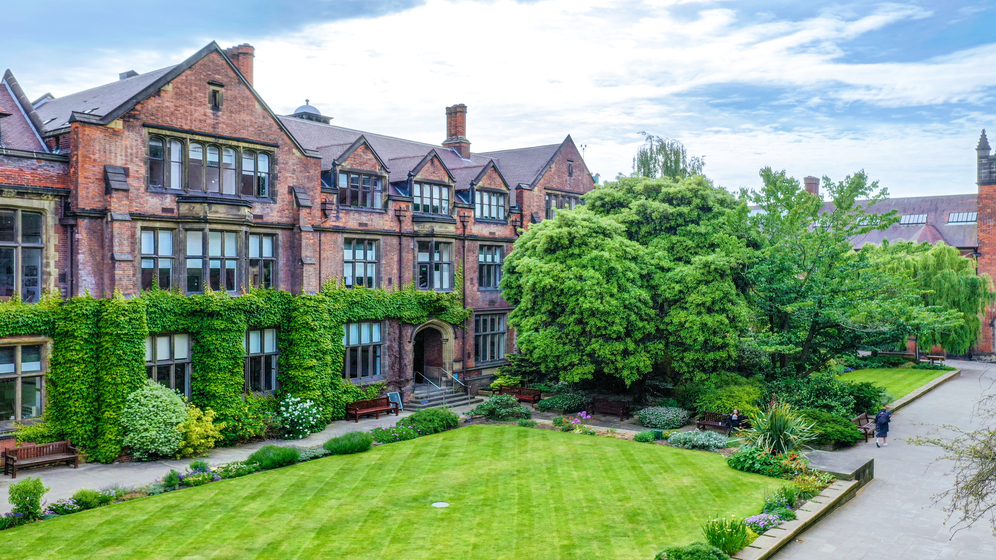Science, Thought and Practice by Richard Hatton
Discover the beautiful Science, Thought and Practice stained glass windows, designed by Richard Hatton (1864–1926).
.jpg)
The Artwork
The three Science, Thought and Practice windows at Newcastle University use delicate stained glass to depict three figures engaged in discovery, thinking and making.
Richard Hatton was a skilled designer, craftsman and educator. He was keen to support his fine art and handicraft students with the provision of extra workshop space and opportunities.
To achieve this aim, Hatton and the chair of the Art Committee, Charles William Mitchell (1854-1903), set up the (Newcastle) Handicrafts Company in 1899. Hatton managed the company and acted as its principal designer until 1905, alongside running what became the King Edward VII Art School.
Work produced by Hatton and his students, including the Science, Thought and Practice artwork, was commissioned for buildings around the North East, such as the University’s Agriculture Building, and the King’s Hall in the Armstrong Building.
Examples of Hatton’s own work can also be found in the Victoria and Albert Museum (the V&A) and in the Laing Art Gallery.
The artist
Hatton’s own art education and his teaching experience at the Birmingham Municipal Art School placed him at the forefront of Birmingham’s progressive system of education in the decorative and applied arts.
He was in close contact with artists associated with the Pre-Raphaelite Brotherhood and with ideas about fine art and decorative design practice, which was to become known as the Arts and Crafts movement.
Hatton brought all of this with him to Newcastle.
Hatton’s time at Newcastle
Richard Hatton came to Newcastle Art Department (then part of Durham University) in 1890. He had moved from Birmingham Municipal School of Art and, by the time the Art Department moved into its new King Edward VII School of Art building on the campus in 1912, Hatton had been promoted to the status of Director.
In the 30 years that Hatton oversaw the running of the Art Department at Newcastle University, he was instrumental in bringing about significant developments that elevated the status of art education at university level. These developments included the introduction of the first Fine Art degree course in any British university in 1923.
In 1917, Hatton was appointed Durham University’s first Professor of Fine Art, becoming only one of two people to hold such a post at the time (the other being the Slade Professor of Fine Art at University College London).
To support the learning and skills of students, Hatton wrote numerous books on art and design practice, which have since been circulated worldwide. He also encouraged donations of objects to the art school to enhance the students’ appreciation and understanding of their practice.
Hatton oversaw the donation of a significant financial bequest to support the delivery of the University’s annual Charlton Lecture by experts in the fields of art, art history and culture.
Hatton died in 1926. The gallery of the art school was renamed in his honour – The Hatton Gallery. Its substantial art collection also bears his name.

.jpg)

